The volumes that make up Module 1 are stepped in height. In the west are the Institute Buildings, one of which exploits the maximum permissible height with its seventh floor that houses the areas for representation and communication (roof terrace café and fireplace lounge), in a prominent position with a view of the Wörthersee lake. The lecture hall and seminar room buildings are communicating vessels that are docked to the institutes. This creates two semi-open entrance courtyards, one of which faces the car park, the other the internal area of the university. A large pergola covered with creepers relates to the internal courtyard of Rainer’s building and forms the new centre of the complex. The single-storey kindergarten is placed in front of the ensemble. The proportions and positions of Module II are determined in the same way. We decided
Campus AAU Klagenfurt
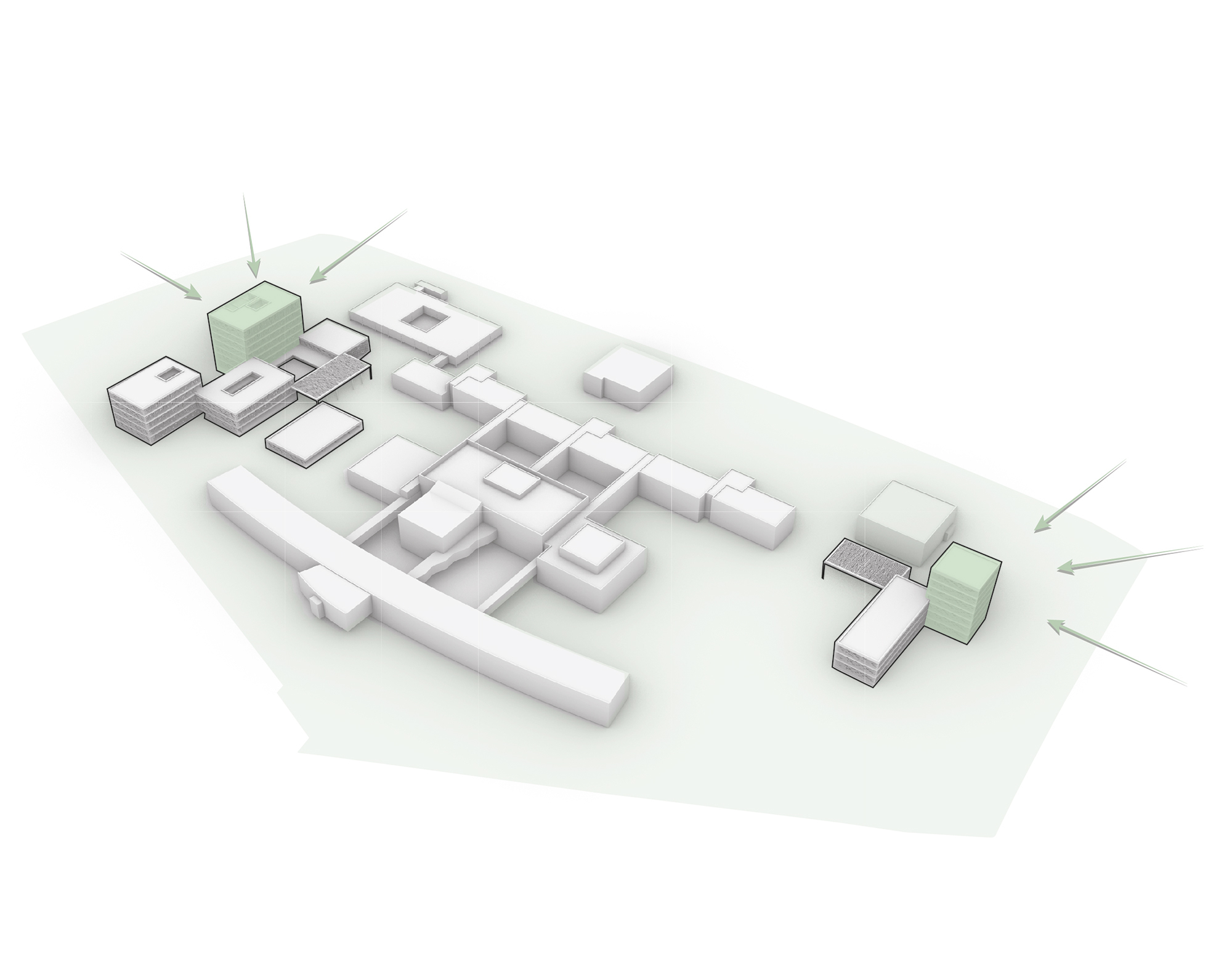
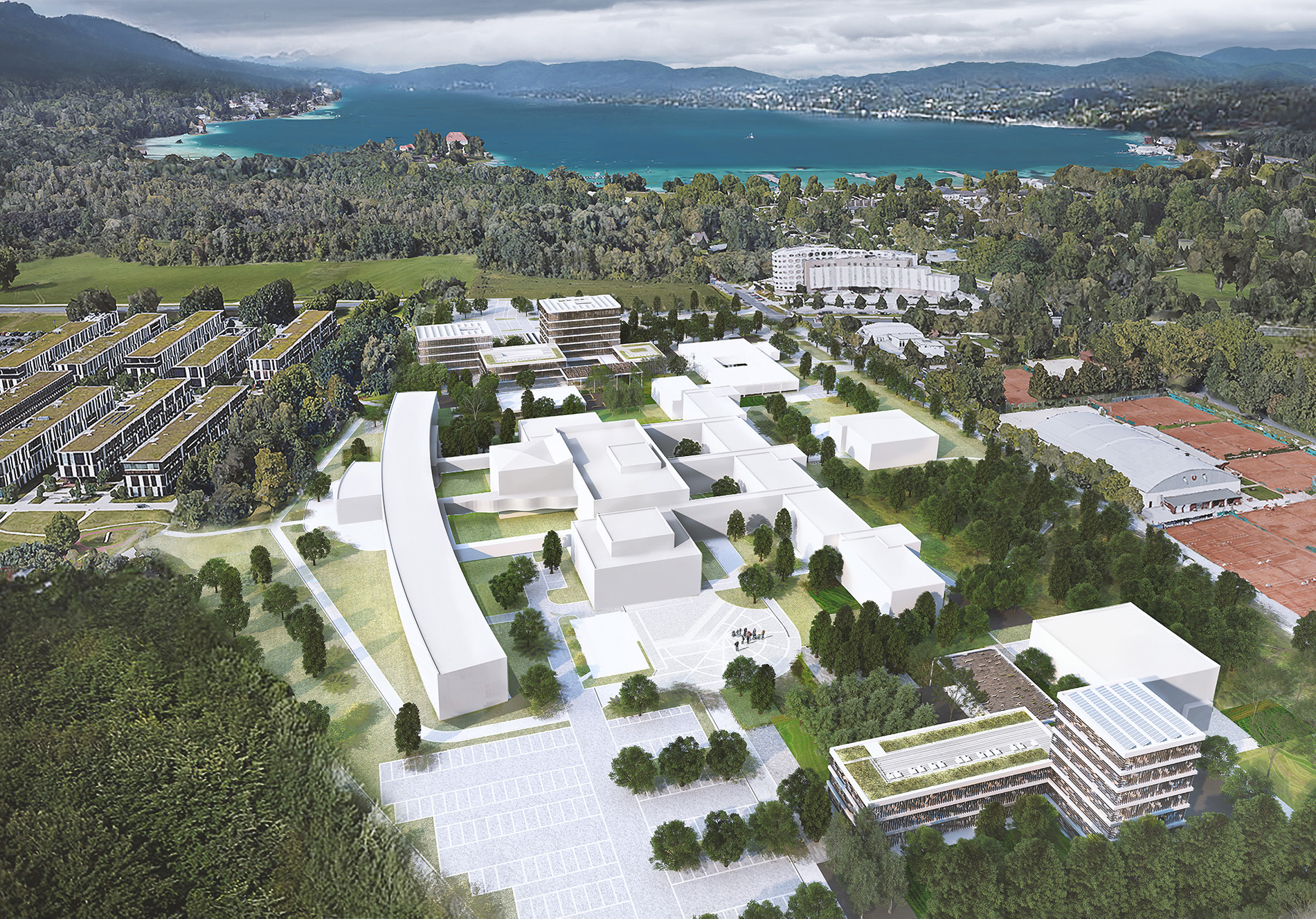
The further development of the Alpe Adria University campus is the continuation of an exciting story. Roland Rainer laid the foundation stone in 1970 with his more than prototypical building.
Year
2021
Venue
Klagenfurt
State
Competition
Category
Education
Size
11.987 m²
Year |
Venue |
State |
Category |
Size |
|---|---|---|---|---|
2021 |
Klagenfurt |
Competition |
Education |
11.987 m² |
Year
2021
Venue
Klagenfurt
State
Competition
Category
Education
Size
11.987 m²
In the following years (1973-77) the new university was erected as a structurally based system of individual, slightly stepped and staggered buildings. These volumes are connected to each other by bridge-like circulation corridors, creating courtyard structures of a specific kind. Around 2000 the development in the southerly direction was terminated by a slab that is slightly curved but nevertheless conveys an impression of massiveness. This meant that the additions dating from 2007 (University Sports Institute) and 2010 (Foundation Building) could only be made in the north and are positioned without any relationship to the rest of the complex.

To augment the existing buildings in a way that not only weaves together the new and the old but also meshes the different parts of the existing development with each other.
We looked for an approach that would not just continue this somewhat heterogeneous development story but would augment and condense it so that, in the best of cases, the new development could be seen and experienced as part of a whole. The temptation to design a “signature building“ that would differ completely from the existing complex was great. But it seemed to us more coherent to discover a system that augments the existing buildings in a way that not only weaves together the new and the old but also meshes the different parts of the existing development with each other. This meant discovering the kind of system that could have served as a basis for the whole complex since 1970.

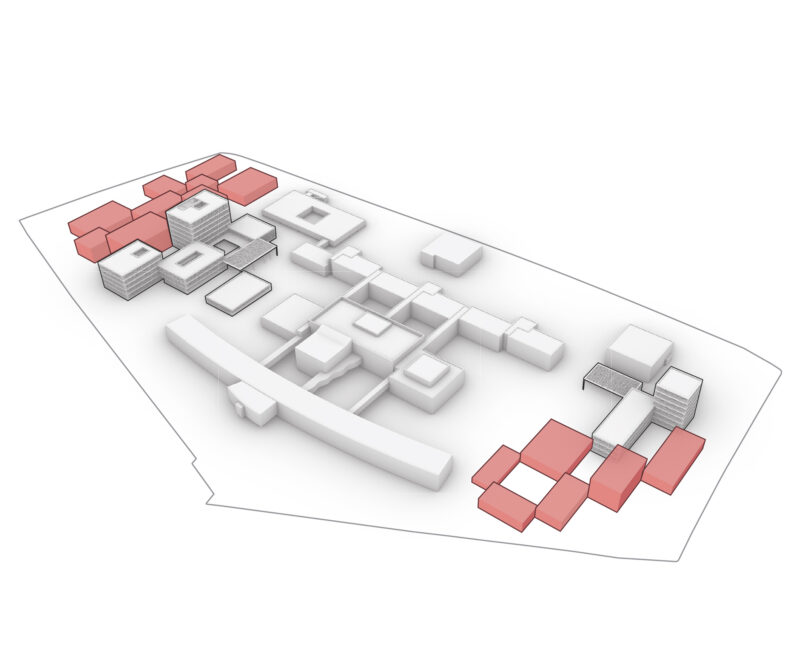

To achieve this, it was necessary to analyse the existing typologies. Naturally, the early building by Rainer, which from the start was conceived as a prototype, formed the start. The proportions of its wings and courtyard were projected southwards, while those of the main building were extended to the west. This produced an irregular grid that, like a chessboard, could be occupied with buildings which reflect the proportions of buildings erected at different dates.

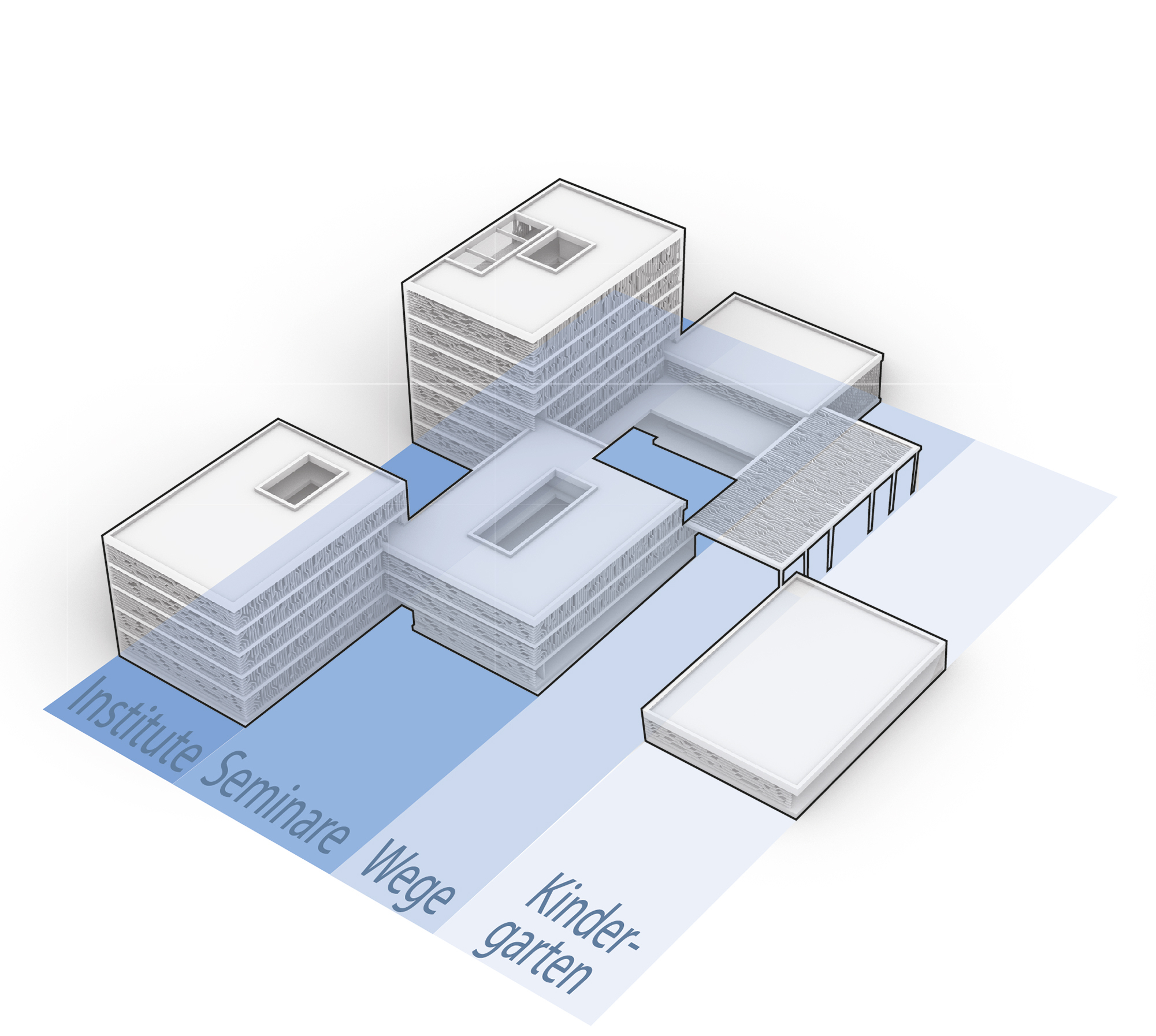
to place this module in the north-east, where it clearly identifies the university and its entrance for those coming from the city centre or from Klagenfurt train station. Another pergola forms the first central place of arrival and relates the Foundation Building to the university complex as a whole. Consequently, the new overall layout is framed by two highpoints: the Digital Age Tower I, which faces towards the lake, and the Digital Age Tower II, which is turned towards the town. Considerable potential is available for the future: if the system is to be continued there is nothing to prevent building over the existing car parks.
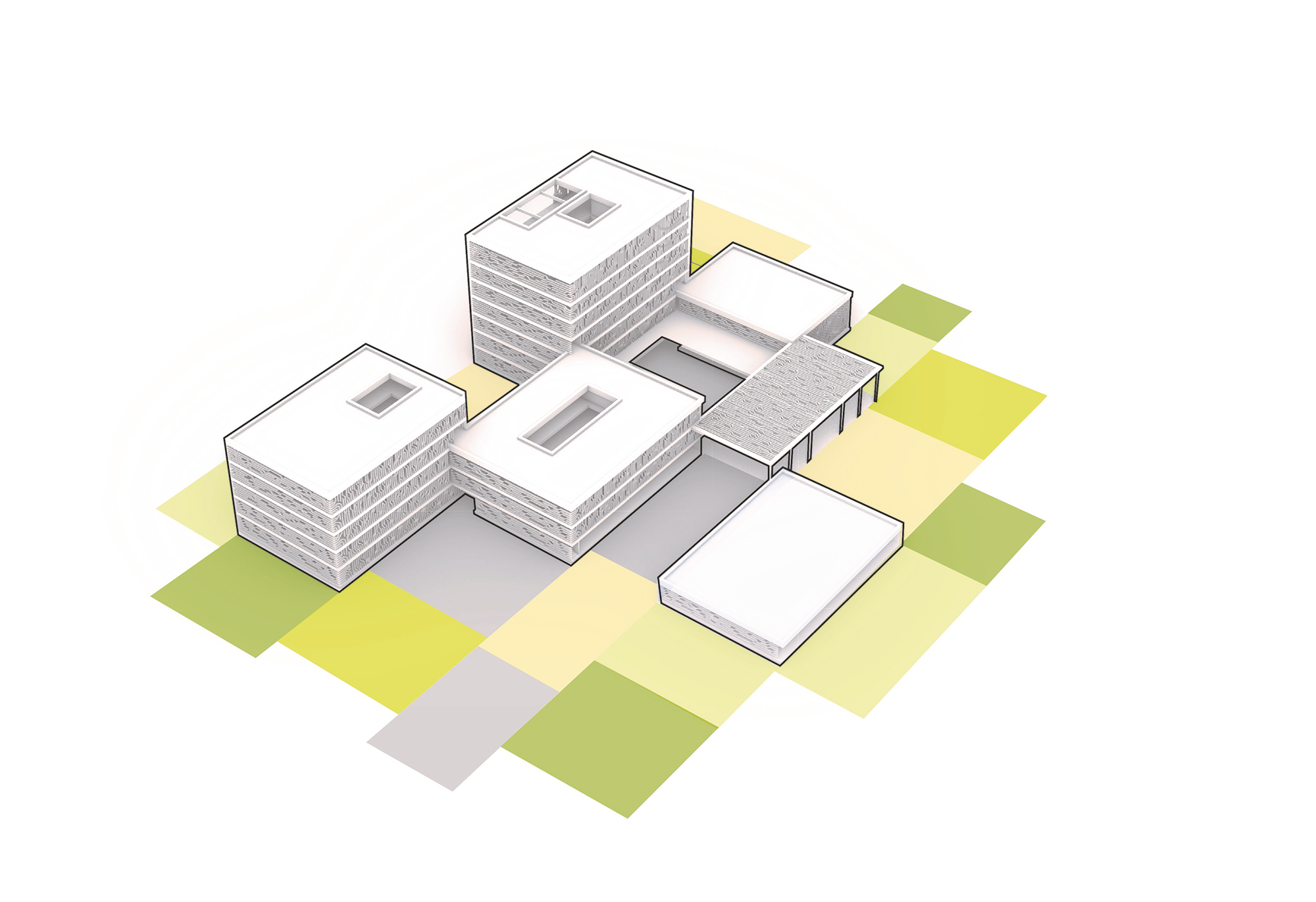
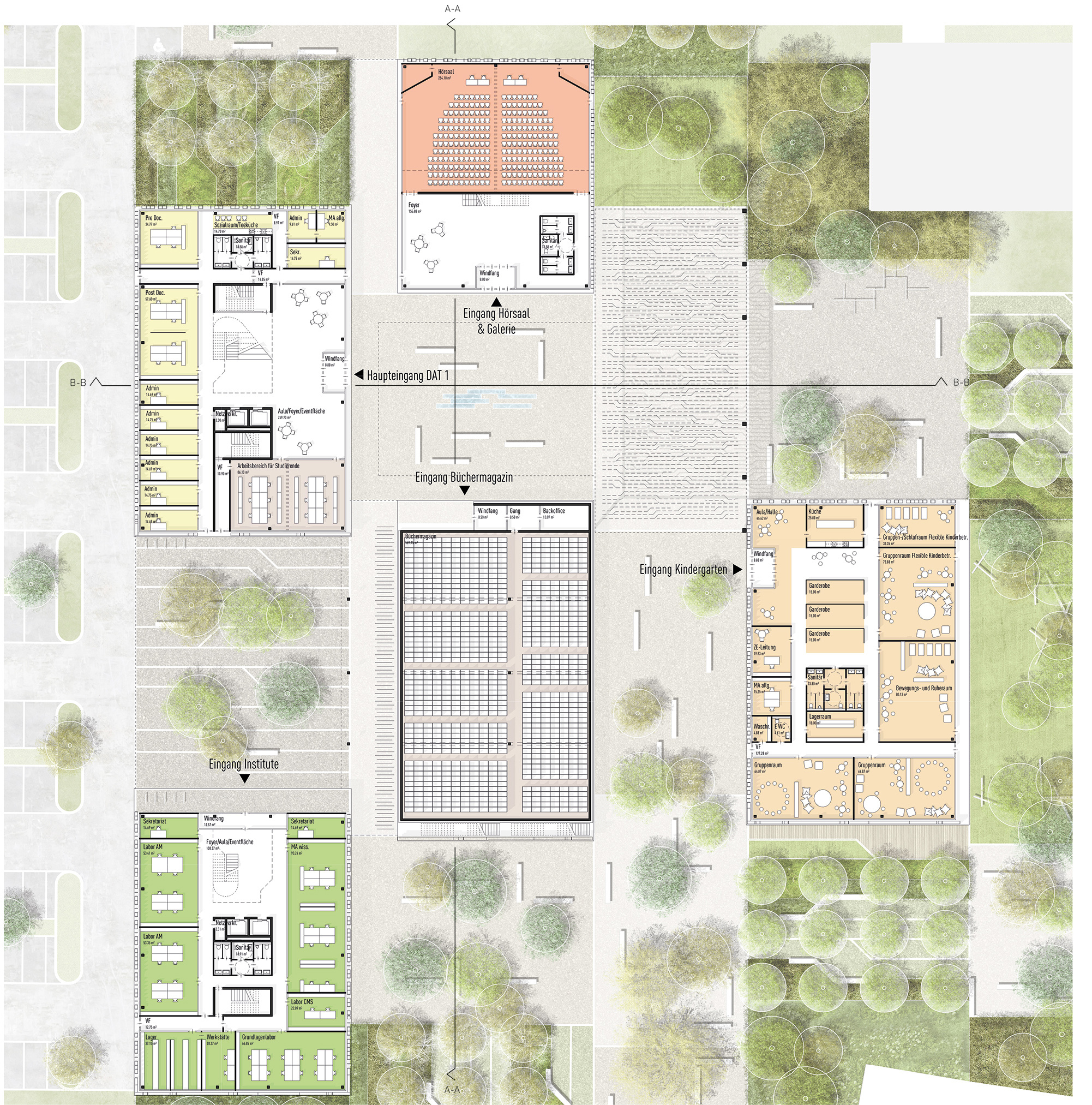
The interplay of open space and architecture
In Campus Klagenfurt the interplay of open space and architecture allows the conception of modular, flexible ensemble. The composition of the building on the basis of gaps provides the basis for an omni-directional plasticity and extendibility. The ductus of the building is taken up in the open space and continued as a system of alternating squares and green areas. A series of different spaces and fields is created, whose diverse programming and possibilities of use are reflected in the planting, materials, and equipment.
Partly paved areas in front of the approaches to the buildings function as a formal entrance area, meeting point and events space. Individual trees, cooling water features, and seating for groups of different sizes support this programming. The core here is a pergola covered with climbing plants that connects the parts of the buildings.
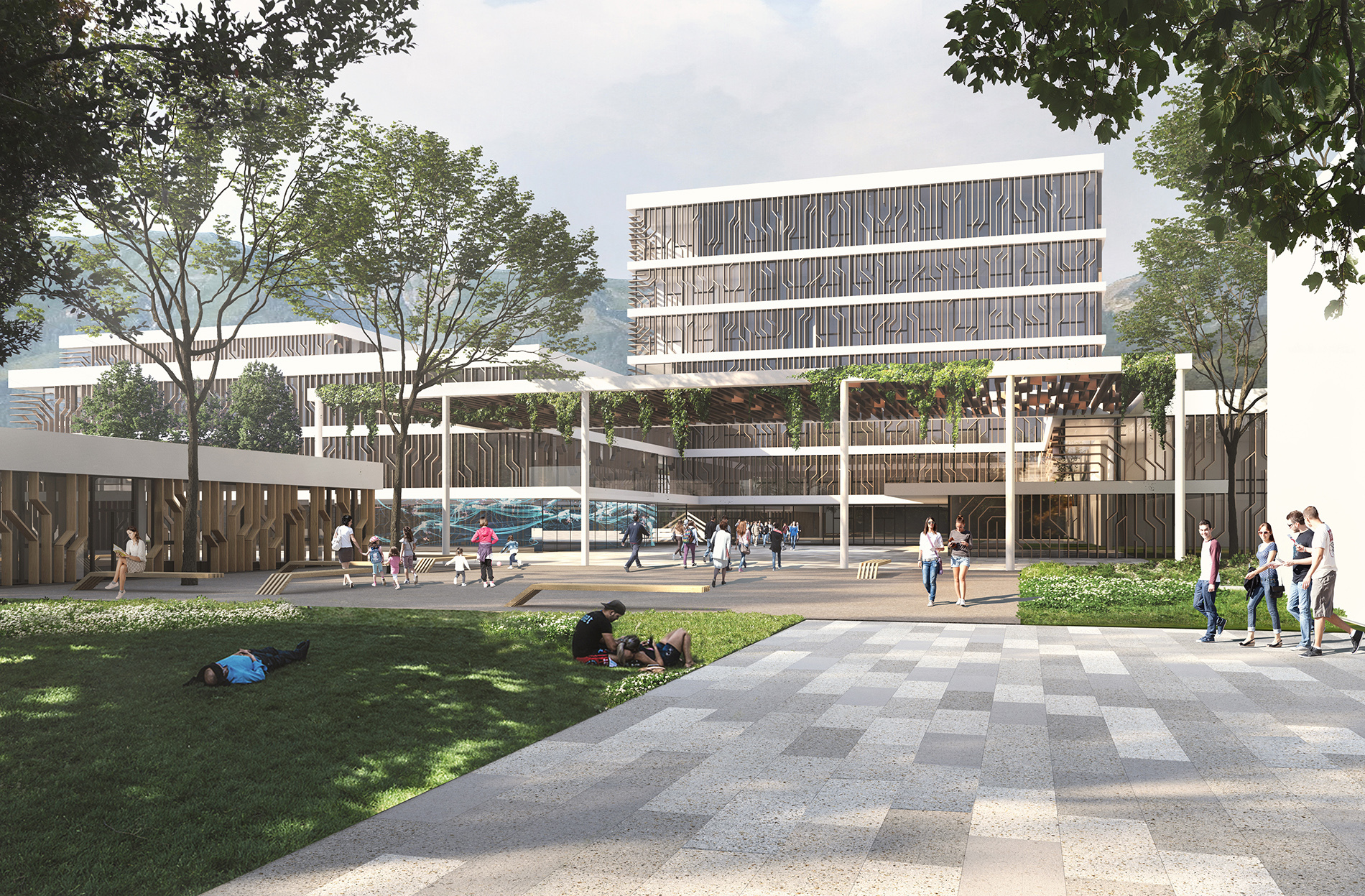
Connecting routes between buildings, to the existing buildings and to the nearby surroundings are conceived as a sequence of outdoor areas that suggest a campus-like use of space. This diversity is continued by scattered green areas. Lawns, each dotted with trees to provide shade, invite people to use them, while luxuriant plantings of shrubs form outdoor areas for smaller groups. As a further element for atmospheric differentiation, each field, like an arboretum, is allotted a native species of tree that, through when it blooms and its colour in autumn, develops its own characteristics during the year.
The catalogue of uses for the various areas includes outdoor learning areas, reading corners, fitness zones, meadows to lie in and the outdoor area of the kindergarten. Thanks to the modular way in which it is built up the design system allows adaptations to be made if requirements are more narrowly defined but without compromising the overall appearance. Two intensively planted roofs increase the amount of green space and serve as areas for study and breaks that are directly connected to the rooms in the interior. The luxuriant surrounding planting has a space-forming effect and is a signal that is visible from afar.




Intended as part of a green, climate-active infrastructure, the planting of numerous trees will have a cooling effect in urban space. As far as possible squares will be covered with materials that allow water to seep away or will remain unsealed with gravel surfaces. In accordance with the “sponge city” principle the aim is to absorb on the site any water that runs off surfaces and roofs.


Architecture
Pichler & Traupmann Architects
Design team
Bartosz Lewandowski (Team leader)
Elisa Mazagg
Florian Zeif
Client
BIG Bundesimmobiliengesellschaft m.b.H., Vienna
Landscape architecture
Lindle+Bukor – studio for landscape, Vienna
Hard facts
Start of planning: 2021
Usable floor area: 10.426 m²
Gross floor area: 11.987 m²
Gross volume: 47.085 m³
Location: Klagenfurt
Function: University campus
Scope: EU-wide, not open, single stage competition
Model
Harald Schmidt, Vienna
Renderings
CHRONIC PICTURES Vienna